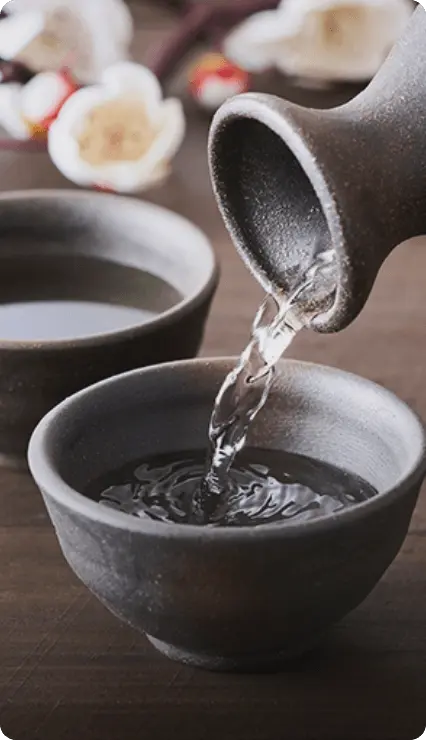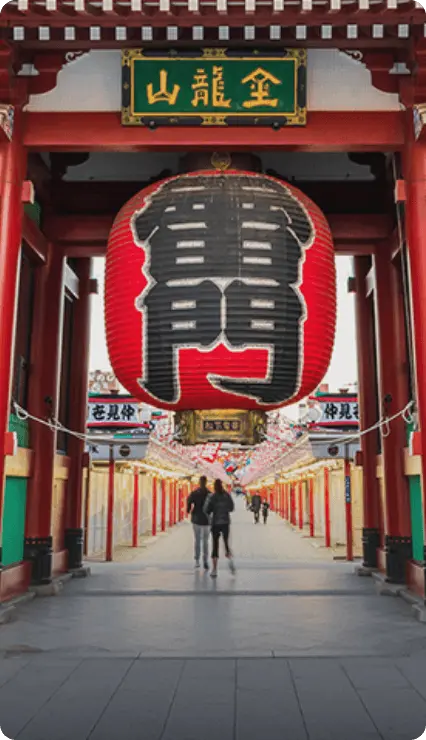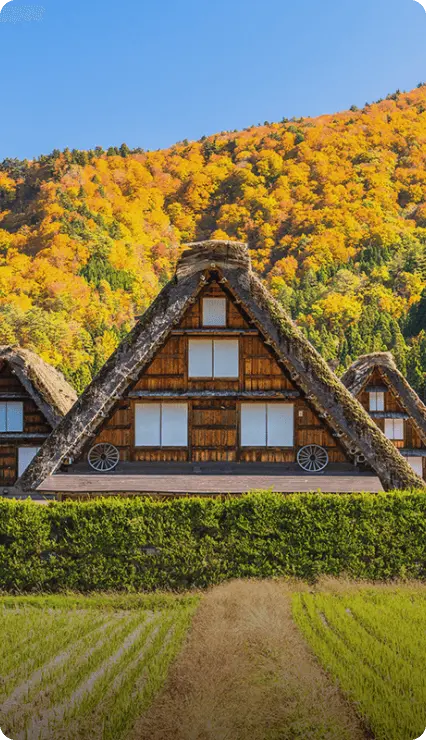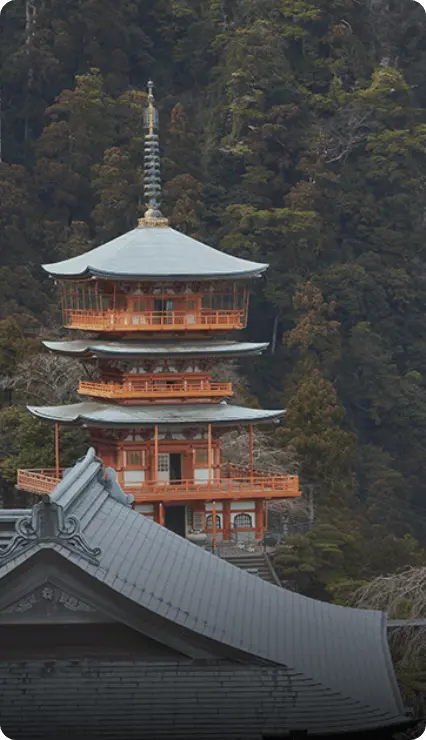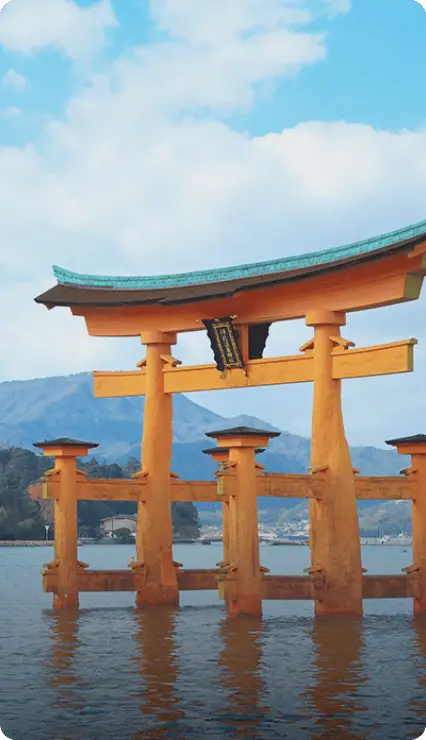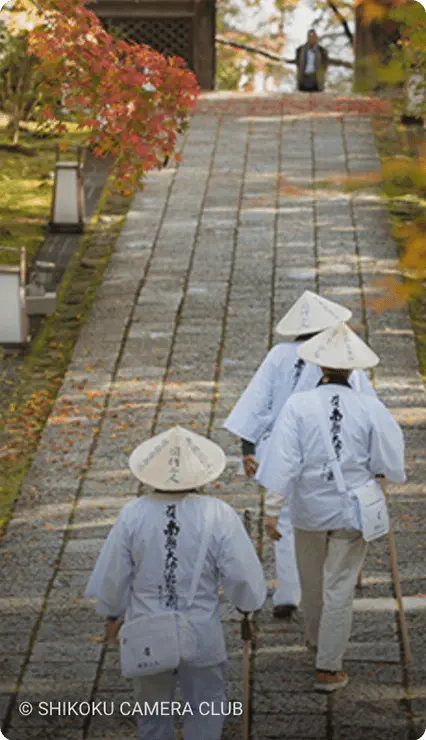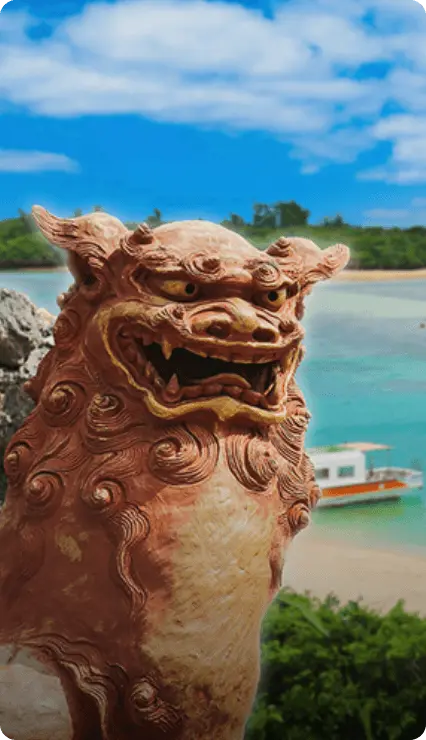
Ehime, in the Shikoku region, exemplifies Japan’s close connection with nature. Here you’ll find the stunning Mount Ishizuchi, one of the country’s sacred mountains.
Japan on and off the trail
Experience a different side of Japan's great outdoors in Shikoku and Tohoku.
BY ROB GOSS
Previously published on nationalgeographic.com
Visitors to Japan have likely heard about the cherry blossoms, hot springs, and Mount Fuji—maybe even the snowy slopes of Niseko and sun-kissed islands of Okinawa—yet much of Japan's great outdoors remains unknown. Take the relatively under-visited regions of Shikoku and Tohoku, one a short flight west of Tokyo, the other an easy train trip north, which reward travelers who veer off the beaten path with scenic coastal trails, hikes to sacred peaks, and a host of other experiences in nature.
-

Credit: Shusaku Nagahama
Ishizuchi Shrine Okunomiya Chojosha, sits atop Mount Ishizuchi. Good weather conditions at its high altitude make May to October the best time to visit the shrine, and the mountain itself is a major site of Japanese Buddhist mountain worship.
-
Communing With Nature in Ehime
-
Ehime in Shikoku, located in southwest Japan, is a case in point. The prefecture is home to one of Shikoku’s main cities, Matsuyama, as well as attractions like the traditional hot springs of Dogo Onsen and the Shimanami Kaido cycling trail. Less known to travelers to Ehime, however, is Western Japan’s tallest peak, 6,500-feet (1,982-metre) Mount Ishizuchi, a place that brings into focus Japan’s traditionally close connection to nature.
-

Credit: Shusaku Nagahama
Ehime, in the Shikoku region, exemplifies Japan’s close connection with nature. Here you’ll find the stunning Mount Ishizuchi, one of the country’s sacred mountains. -

Credit: Shusaku Nagahama
Experienced trekkers can explore Mount Ishizuchi’s more challenging faces using the chain-assisted Tameshi-no-Kusari route, which delivers dramatic mountain scenery and reflective moments at mountainside shrines.Considered one of Japan’s seven sacred mountains, Ishizuchi has been a site of worship for more than 1,000 years in the syncretic (the combination of different forms of belief) Shugendo religion, whose practitioners still commune with nature here through activities such as mindful forest hikes and waterfall meditation. Whether the mountainside is verdant in summer, painted white with snow in winter, ablaze with red foliage in fall, or accented by blossoms in spring, there are many ways to take in Ishizuchi’s deeply natural surrounds and understand why generations have found a sense of the spiritual here. For experienced trekkers, there’s the chain-assisted Tameshi-no-Kusari route, which delivers dramatic mountain scenery but also quiet moments at mountainside shrines. For a far gentler experience, there are easier trails to hike after a cable car ride 4,265-feet (1,300-meters) up the mountain. Or, if walking isn’t your thing, you could explore the area’s network of cycling routes, which are especially scenic on the 11-mile (18km) Ishizuchi Skyline road.
-

Credit: ©PIXTA
One of 10 UNESCO geoparks in Japan, Cape Muroto is a geological marvel of tectonic formations hiding spiritually-significant temples and fossilized remains. -

Credit: ©SHIKOKU CAMERA CLUB
In addition to rock formation and fossils, Cape Muroto’s densely vegetated areas nurture a host of wildlife, including twisted and mystical akou trees. -

Credit: ©SHIKOKU CAMERA CLUB
In the Shikoku region, the surroundings are an expression of both Japan’s spiritual and natural side, especially at monuments like Ishizuchi Shrine at the base of Mount Ishizuchi, where visitors can enjoy a peaceful atmosphere within its grounds.
-
Geology and Sprituality in Cape Muroto
-
On Shikoku’s southern coast, Cape Muroto in Kochi provides a different expression of Japan’s natural side. One of 10 UNESCO Global Geoparks in Japan, its designation was awarded in part because of the insights the local environment gives into land formation processes and plate tectonics. You can see that yourself on hiking trails that take in rugged coastline, subtropical vegetation, and geological formations that hide fossilized remains.
As with Mount Ishizuchi, there’s also a strong spiritual element to Muroto. Namely, Shikoku is famous in Japan for an 88-temple pilgrimage connected to the founder of Shingon Buddhism, Kukai (posthumously called Kobo Daishi). While the full, 745-mile (1,200km) trek can take months, three of the temples can be visited in Muroto on the one-day Muroto Sanzan hike, en route passing places like the cave where Kukai is said to have first achieved enlightenment 1,200 years ago. Starting from the Muroto Global Geopark Center, you could also explore the area more widely by bicycle.
-
Hiking Tohoku’s Path to Recovery
-
Like Shikoku, the Tohoku region in northern Japan offers travelers scenic routes less traveled. These include the Michinoku Coastal Trail, a 620-plus-mile (1,000km-plus) path running along the region’s east coast, created to help with Tohoku’s long-term recovery after the devastation of the March 11, 2011 earthquake and tsunami. With so much trail to choose from, it can be hard to know where to start, but for a couple of days that encapsulate everything that makes the full Michinoku Coastal Trail special, head to Iwate and the roughly 15½-mile (26.3km) stretch of trail between Fudai and Tanohata villages.
-

Credit: Shusaku Nagahama
The Fudai-Tanohata section of the Michinoku Coastal Trail passes through a rugged section called Nedarihama, where it hugs the rocky shoreline.The Fudai-Tanohata route starts with the white sands of Fudai Beach, before passing through small fishing ports and a rugged section called Nedarihama, where the trail hugs a rocky shoreline. Then the scenery changes to an undulating wooded trail that leads to a scenic highlight at the Kitayamazaki Cliffs, dubbed the “Alps of the Sea” for its sweeping views over jagged cliffs and out into the Pacific.
The trail, however, isn’t just about views and absorbing nature—it’s also about connecting with local culture, whether that’s taking in annual performances of traditional Kagura dance-dramas at Unotori Shrine or visiting the fishing huts at Tsukuehama Beach to learn about salt making, mix with locals for cooking workshops using freshy caught seafood, or hop aboard a boat trip with local fishermen.
-

Credit: Shusaku Nagahama
Further along the Michinoku Coastal Trail, the Kitayamazaki Cliffs are known as the “Alps of the Sea” for the sweeping views out over the Pacific. -

Credit: Shusaku Nagahama
The trail isn’t just about immersing yourself in nature, but culture too—locals at Tsukuehama Beach will happily take you through cooking workshops as well as their salt making process.
-
Hot Springs and Views in Aizu
-
Further south, in Fukushima, the Michinoku Coastal Trail reaches its southernmost end. But the natural experiences here aren’t limited to the coast. Inland, Aizu-Wakamatsu is well-known in Japan for Tsuruga-jo Castle and its samurai heritage, which also makes an excellent base for exploring Fukushima’s striking countryside.
In this laidback city’s wooded outskirts, the Higashiyama Onsen area offers a collection of hot spring baths and ryokan inns. These include Harataki, where as well as staying in traditional tatami mat rooms, guests can dine on seasonally focused kaiseki-ryori dinners (traditional Japanese multi-course haute cuisine meals), served from April to September open-air alongside the river. Then there are the mineral-rich hot-spring baths accompanied by seasonal views—a form of relaxation the Japanese have been enjoying for more than a millennium.
-

Credit: Tohoku Tourism Promotion Organization
In the Tohoku region, the Tadami line crosses over the Tadami River Bridge in the rural Oku-Aizu area, offering incredible views of surroundings that completely shift in color depending on the time of year. -

Credit: Tohoku Tourism Promotion Organization
Train isn’t the only way to cross the emerald-green Tadami River—you can take a boat ride from one side to the other, or further up the river to take a slower appreciation of the surroundings. -

Credit: Asuka Co. Ltd.
The Higashiyama Onsen area is resplendent with ryokan inns such as Harataki (pictured) where guests can enjoy an outside soak in mineral-rich hot-spring baths, as well as dine on seasonally focused meals in the open-air alongside the river.Heading west from Aizu-Wakamatsu Station, there’s also the quaint Tadami Line, which trundles through the rural Oku-Aizu area, bringing views of farmland, meandering rivers, and brooding mountain ranges. Hopping off the train here and there, visitors can seize the opportunities for calming boat trips or bird’s-eye views over the Tadami River Bridge, where the Tadami Line crosses a wooded river valley that makes the train look like a tiny prop in a sprawling diorama. Alternatively, east of Aizu-Wakamatsu is the equally photogenic Lake Inawashiro, the country’s fourth-largest freshwater lake, where the sight of snow-capped Mount Bandai looming beyond the lake’s mirrored surface has become an iconic Tohoku view, especially when migrating swans arrive in winter.
Add all that to the wonderfully diverse terrain of the Michinoku Coastal Trail and Cape Muroto, plus the sacred surrounds of Mount Ishizuchi, and there is a lot to discover if you just take a few steps off the beaten path to explore Tohoku and Shikoku.
Shikoku
Shikoku is brimming with natural beauty and rich cultural traditions. At the island's heart, vast mountains and crystal-clear streams make for an impressive scene, while encircling the entire island is an ancient Buddhist pilgrimage route complete with no less than 88 temples.












Hokkaido

Tohoku

Greater Tokyo

Central Japan

Kansai

San'in

Setouchi

Shikoku

Kyushu

Okinawa







